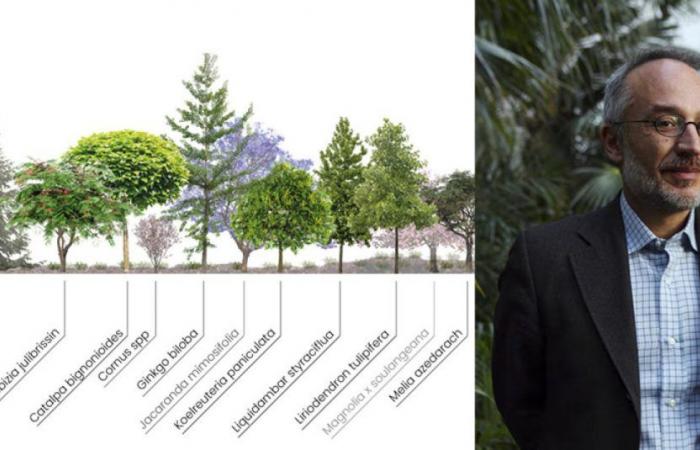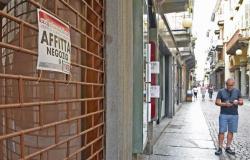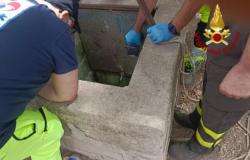
Three scientific societies, among the most important regarding the study of plants in Italy (Italian Botanical Society, Italian Society of Biogeography and Italian Society of Vegetation Science), through a joint press release have an initiative by the municipality of Prato which sees the well-known “botanicstar” at the center was strongly criticized – university professor and popularizer – Stefano Mancuso.
The project, called “The Forest of Neophytes”was inaugurated last May. By “neophytes”, in our context, we mean plants from other environments introduced accidentally or deliberately into Europe and Italy. These plants are often also considered invasive, that is, capable of rapidly colonizing environments that are foreign to them and forming large populations. The main feature of the project carried out in Prato is the presence, in just 7,500 square metres, of numerous species of trees and shrubs introduced to Italy in the past from different areas of the planet. Some of the species used by Mancuso are considered “invasive aliens”, therefore not only foreign to our flora, but also risky for our ecosystems, because they could spread in an uncontrolled way, thus modifying their natural balance.
“Prato is a multi-ethnic city,” explains Stefano Mancuso on the day of the inauguration, “and the park wants to represent precisely this. There are non-native plants but which will become so over time, just as today’s migrants will be tomorrow’s Italian and Prato citizens. This park is called Bosco delle Neofite because, in contravention of the rules which generally require reforestation using only species locals, is made up of plants that are not native to these places but are becoming so. The truth is that the concept of native in itself it is meaningless, since the world, as we know it today, is the result of continuous changes, grafts and migrations”.
An outing which, combining the environmental theme with that of integration between different cultures, aroused great appreciation from many quarters. But it is precisely the comparison between trees and human beings – a evergreen in Mancuso’s narrative – which instead infuriated scientists.
“The arguments with which the project was presented are very perplexing, because they simplify and trivialize important and very distinct problems, such as the need for actions to combat climate change, biological invasions and human migratory flows,” explains the press release. . “Migratory flows concern only one species, ours (Homo sapiens), whose aptitude for migration has been attested since its origin and depends on social, political and economic phenomena. In contrast, neophyte plants are part of the species alien. There are specific national and European policies for managing and combating these species, if they become invasive, due to the damage they could cause to the original biodiversity”.
Precisely for this reason, the three scientific societies do not accept the comparison made by Mancuso with migrants: “It becomes dangerous to propose analogies between migrants of our species and alien species. Complex issues such as immigration and scientific issues such as the management of alien species must be treated with due respect for the areas that characterize them”.
The statement from the three scientific societies ends by explaining that: “Although the Bosco delle Neofite project consists in the creation of an urban park, and represents a moderate danger for native biodiversity, as a botanical scientific community we believe we need to highlight the unfortunate communication strategy with which this initiative was presentedwith the analogy between the migrations of human beings and the artificial introduction of species that would never have arrived by their biological means.”
This is certainly not the first harsh reaction that Mancuso has aroused among those who study vegetation or solutions to mitigate climate change. The botanist’s narration, often very simple and captivating, effectively reaches people’s hearts and stomachs, but semantically walks in the balance on a thin and in some ways very risky thread.
It must be said, however, that the message inherent in the project idea of the “Bosco delle Neofite” is strong, it strikes the imagination: just like a work of art is able to stimulate reflection that go far beyond vegetation scienceengaging with open issues in our society that deserve to be addressed at multiple levels. The Park, not surprisingly, was proposed by an association that deals with art (Arte Continua). On the contrary, the statement from the three scientific societies risks appearing as a stubborn, piqued protest, which takes into account serious conservationist motivations, but without analyzing the profound, broad and according to some “visionary” message that the project wants to launch as a whole. .
After all, gardens and botanical gardens with exotic species have always been created and in Italy there are many plant species introduced in the past which today are an integral part of our “cultural landscape”, both agricultural and forestry. An example is the cypress, introduced in ancient times and even becoming a symbol of Tuscany, but the list would be very long, including many other plants that are now the basis of our “typical tricolor cuisine”.
Perhaps the real problem, often highlighted by Stefano Mancuso’s public outings, is the chronic lack of complexity within initiatives and messages designed to impact the general public. That park, for example, could have welcomed native species and neophyte plants together, but with a great “basic integration rule”: only if the latter are not considered invasive. In this way it would have been possible to reflect both, in general, on “good integration” and on the history of planetary movements of men and plants, but also on the risks of introducing species foreign to our ecosystems, in particular if potentially harmful to biodiversity. The message would undoubtedly have become more difficult, but much more stratified and multifaceted, bringing users not only an emotion, but also some more “cultural maps” to orient themselves in understanding anthropic and natural phenomena that are not always comparableas the three scientific societies have rightly underlined.
Complexity should not be shunned, especially today, in a society dominated by slogans that lives in the midst of enormous environmental, climate and social crises. Instead, it is necessary to inhabit it and propose it daily as a “method for observing the way”, especially if scientific dissemination is a profession. After “welcome to all newbies” and the severe – but fair – criticism of the three scientific societies, it would then be necessary to start moving on common ground, looking for a new way to tell the difficult, fascinating, intricate relationship between human beings and nature.
Why did we write about it on L’AltraMontagna? Because this example, which comes from a city on the plain, it can actually make us reflect on the many simplified and sometimes Manichaean narratives that surround trees, plants and woods in the High Landsin their complex and essential relationship with other species and the socio-economic fabric of the mountain.
Perhaps the mountains today can represent an ideal context for experiment with new narratives suited to complexity. It’s an uphill journey: our ideal terrain.
Photo: The Neophyte Forest in Prato, Arte Continua





